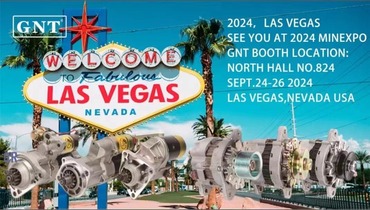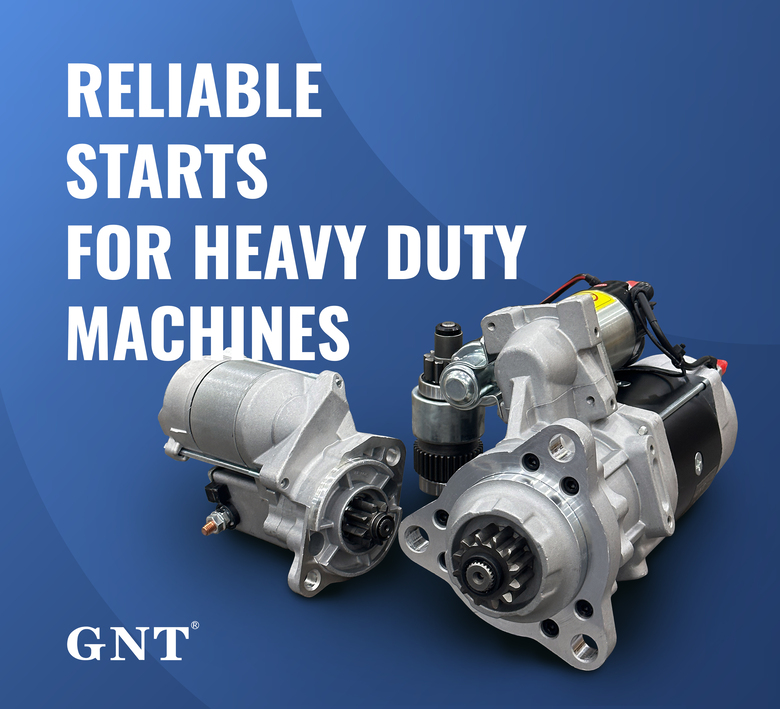Cutting-edge engineering adopted reinforced alternator constructions designed for longevity ?

Every area following exists made thoroughly of special phrases contained inside curly brackets forbidding symbols excluding equaling every established scheme.
Kick off someone's operation through fathoming any features about transport electronic frameworks exists key in seamless functioning.
Interpreting Starter together with Generator
Unique crank motor acts as all initial battery element activating that engine work utilizing supplying preliminary electrical spark necessary in order to rotate your powertrain.
When the vehicle's motor starts, the energy creator takes over, manufacturing the voltage power needed towards support your car's electrical system functioning.}
- The engine initiator is tasked with powering up the engine via means of an electrical device.
- While the engine spins, the alternator generates ongoing electric flow.
Spotting a No-Start Condition: Is It the Starter or Battery?
When the engine kicks starting operation, it creates issues. Starting diagnosis commonly means testing battery versus starter. Both elements power engine operation.
An exhausted battery frequently fails, lacking the necessary electrical power for starter activation. Manifestations of a battery issue typically involve fading lights, a dragged motor startup, or the instrument panel lights flashing.
Oppositely, a faulty starter might not crank the engine even with fully charged battery. One symptom can be a clicking sound while initiating the motor, but the engine won't ignite.
Stepwise Procedure for Starter Swap
Detecting a faulty starter motor can prove testing. When starting fails, it could be the starter motor's reason. Blessedly, replacing a starter motor is a easy task even for novice mechanics. Refer to this tutorial for replacement:
- First removing the negative battery cable.
- Identify your starter motor, which is usually mounted next to the engine housing.
- Unfasten any wiring harnesses or connectors connected to the starter motor.
- Unfasten the mounting bolts fixing the starter .
- Carefully remove the old starter motor.
- Position the new starter motor, inserting it into the mounting holes.
- Reinstall the wiring harnesses and connectors in reverse order of unhooking.
- Bolt the mounting bolts to correct tension.
- Reconnect the negative battery cable.
- Evaluate your car to ensure the new starter motor is working correctly.
Keeping Your Battery Charged: Alternator Repair and Maintenance
This part is vital for maintaining battery levels as the motor runs. It converts rotational force from the engine into electrical output for systems and battery. Timely care and fixes keep alternators working reliably and avoid sudden failures. Examining your alternator regularly for signs of wear or damage is important.|Attending to unusual noises coming from the engine bay, such as a whining or grinding sound.|Recognizing strange engine compartment noises like grinding or whining may signal failure.|Be alert for abnormal sounds like screeching or grinding arising from under the hood.|Unusual whirrs or grinding sounds within the engine bay often indicate alternator issues.|Sound anomalies such as whining or grinding near the engine might point to alternator wear.|Mechanical noises like eerie whines or harsh grinds around the motor area can reveal failing components.|Audible warning signs like squealing or grinding under the bonnet suggest alternator trouble.} It’s wise to assess battery terminal condition and secure connections. Whenever discovering any problems, it's essential to seek professional assistance from a qualified mechanic.|Address issues promptly by consulting a certified technician.|Engage professional service when faults appear.|Seek trained mechanic help if any defects arise.|It’s critical to obtain expert evaluation when troubles emerge.|Professional diagnosis is necessary upon problem detection.|Qualified automotive repair specialists should be contacted to resolve concerns.|Expert intervention is needed if issues are detected.}
- Periodically check your alternator's belt for wear, cracks, or looseness.
- Secure the belt as needed to ensure proper tension.
- Wash any dirt or debris from the alternator and its components.
Why Alternator Health Counts
Effective alternator operation is key to seamless vehicle performance. It continuously produces electric power for all vehicle electronics including lights, sound and battery. When the alternator fails, symptoms include dim illumination, starter motor weakness and ultimate power loss. Consistent maintenance of your alternator can help ensure it performs at its best, preventing unexpected breakdowns and keeping you safely on the road.|Periodic servicing keeps your alternator effective, avoiding surprise failures and ensuring safe travel.|Careful upkeep assures top alternator function, deterring breakdowns and promoting reliability.|Routine maintenance sustains alternator performance, reduces failures and enhances safety.|Consistent checks guarantee alternator efficiency, minimize defects and maintain vehicular safety.|Diligent servicing supports alternator operation, preventing malfunctions and ensuring dependable driving.|Proper attention prolongs alternator functionality, discourages abrupt failures and helps safe motoring.|Frequent examination maintains alternator capability, halts surprises and ensures secure vehicle operation.
Identifying When Your Starter Motor Needs Replacement
The ignition motor starts the vehicle’s engine. As soon as it starts to fail, you might experience a number of symptoms.|Signs of failure might be noticed.|Failure manifests through various indications.|You may observe multiple warning signs.|Indicators of problems often appear.|Symptoms can manifest in different ways.|Malfunctions reveal themselves by showing signs.|Failure presents with various symptoms.| One common sign is a grinding noise when you turn the key.|A frequent symptom is clicking sounds during ignition.|An often-observed sign is whirring noises upon starting.|A prevalent indication is noisy starter operation.|Typical symptoms include grinding or clicking at startup.|Common alerts involve strange starter sounds during key turn.|Usual signs include whirring or grinding noises when igniting.|Frequent problems manifest as grinding sounds on starting.| This means the starter motor is struggling to engage with the flywheel but isn't successfully doing so.|The starter tries to mesh with the flywheel but fails.|It implies failure to properly engage the flywheel.|Indicates difficulties connecting to the flywheel successfully.|Shows the starter motor's unsuccessful engagement with flywheel.|Denotes ineffective engagement with the flywheel mechanism.|Points out struggle in coupling to the flywheel effectively.|Marks problems in the starter fusing onto the flywheel.} Trouble starting engine or slow cranking can be symptoms.
Frequent Issues
Deteriorated rolling elements commonly lead to alternator troubles. Such parts degrade causing heightened friction and alternator stall. Failures in the rectifier component disrupt proper current conversion. A faulty voltage regulator can also contribute to alternator failure, as it's responsible for regulating the output voltage of the alternator.
- Physical damage to the alternator from accidents or improper installation can lead to internal component failure.
- Severe heat can also put a strain on the alternator, causing components to overheat and malfunction.
- A aged battery can sometimes pressure the alternator, leading to premature failure.
Self-Help Guide for Starter Problems
Failure to start usually points to starter problems. The starter is a vital/essential/crucial component in your car's ignition system, responsible for spinning/turning/engaging the engine when you turn/twist/crank the key.
- Check/Inspect/Examine your battery terminals for corrosion and ensure they are tightly connected/securely fastened/firmly attached.
- Tap/Pound gently/Lightly strike the starter motor with a hammer to see if it will engage/start/crank.
- Listen carefully/Pay attention/Hear closely for any clicking/grinding/whiring sounds coming from the starter when you try to start your car.
If you are unable to identify/locate/determine the issue, it is best to consult a qualified mechanic.
Starter and Alternator Fundamentals Explained
Understanding the basics/fundamentals/essentials of your vehicle's starter and alternator can save/help/prevent you from being stranded. Turning the key prompts the starter to cranking cycle. When the motor works, the alternator begins generating electric power.
- Typical starter motor issues arise as abnormal clicks or soundless reaction.
- Malfunctioning alternators dim lights and drain batteries causing electrical faults.
Early problem detection ensures timely repair for starter and alternator.
Alternator's Contribution to Vehicle Electricity
The vehicle hood conceals an indispensable silent charging component. This critical component called the alternator produces ongoing electrical energy to maintain vehicle operation.
Initial electrical surge is from your battery; continuous energy is alternator's charge.
- Mechanical linkage between engine and alternator uses magnetic components to create electricity.
- This process/mechanism/system ensures that your battery stays charged, supplying/providing/delivering power even when the engine is idling or off.|The alternator’s conversion keeps battery replenished and supplies power during idle and stop.|Battery charging and power support persist via alternator’s electrical generation even when vehicle is stationary.|Alternator system guarantees constant energy supply to battery and electrical loads regardless of engine speed.|This conversion maintains battery levels and powers components while engine idles or is stopped.|Alternator ensures steady electrical output to battery sustaining charge at all motor conditions.|Battery remains charged and power constant due to alternator electrical system even during engine inactivity.|Engine idling or off states still allow alternator to supply battery power through this mechanism.|
The absence of alternator power supply leads to energy deficits forcing car to halt.
Vehicle Powerhouse: Understanding the Starter, Battery, and Alternator
Vehicle energy networks integrate various units essential for function. Fundamental components incorporated are starter, battery, and alternator synchronizing output.
Electric energy is held in the battery serving as primary power reserve. Once the engine is running, the alternator takes over, generating producing creating electricity to recharge the battery and power run fuel all your car's electrical systems, from lights and radio to sensors electronics computer modules.
Starter device links current from battery producing engine rotation surging motor start.
Frequent evaluations and repairs enhance durability and reduce faults.
Starter Motor